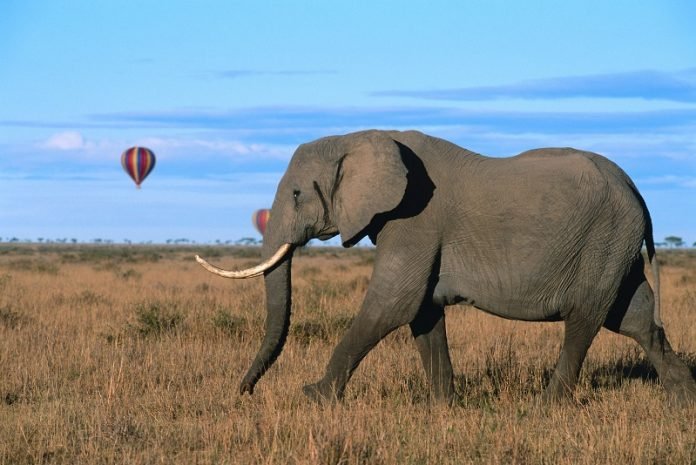
Ice, mammoths, and elephants may seem like an unusual trio, yet they are linked in a way that is presently unfolding a significant threat to our environment and the conservation of elephants.
The tusks of long-extinct mammoths, encased in the frosty realms of Siberia, are emerging as the permafrost melts due to global warming.
These tusks, known as “ice ivory”, are not only fascinating relics of an ancient past but have also become a hot commodity in the illegal ivory trade.
The dilemma it presents not only poses a risk to the current elephant population but also delivers a blow to our environment.
Over 10,000 years ago, woolly mammoths meandered across the icy landscapes of the Northern Hemisphere.
However, these magnificent creatures met their demise, becoming extinct and their remains were entombed in ice.
Now, with the climate gradually warming, the permafrost preserving these mammoths is melting, exposing their tusks and bones primarily in Siberia.
You might wonder, how does this connect to modern elephants?
Dr. Caroline Cox and Dr. Luke Hauser from the University of Portsmouth reveal that woolly mammoths and modern elephants share common ancestors, implying a notable similarity in their tusks.
The tusks of both creatures contain Schreger lines, a distinct characteristic that makes mammoth ivory almost identical to elephant ivory.
As Dr. Cox explains, traders are exploiting this similarity.
They’re seizing mammoth tusks, or “ice ivory”, and manipulating their sale to sustain the illicit ivory market, occasionally mislabelling them as elephant ivory. This trade plays a dark role, complicating conservation efforts to protect existing elephant populations.
An increase in the demand for mammoth tusks, especially in the Far East, has sparked a precarious and often unlawful extraction method.
Hunters in Siberia, eager to meet this demand, are opting for aggressive and environmentally detrimental mining methods, such as using high-pressure hoses to expedite the permafrost melting process, all to extract the ivory faster.
Dr. Hauser expresses concern about these extraction methods, stating that not only are they hazardous, but they are releasing gigatonnes of greenhouse gases like methane, which were previously locked away in the permafrost.
The subsequent release into the atmosphere is contributing to global warming, setting a dangerous precedent that adversely affects both current wildlife and the planet.
But this goes even deeper. While mammoths have been extinct for millennia, their tusks have now become a quasi-legal loophole in the ivory market, dodging regulations set by the Convention on International Trade in Endangered Species of Wild Fauna and Flora (CITES).
CITES, established to safeguard present-day elephants and other animals from extinction due to trade, struggles to regulate this new-found source of ivory.
The researchers underline the importance of international cooperation to address this growing issue.
It’s more than just preserving mammoth tusks and studying them to comprehend how they lived and died. It’s about safeguarding the elephants we have now and taking responsible actions to protect our environment.
Unraveling the secrets of mammoth’s history, respecting their ivory as a non-commercial entity, and using the information garnered to protect living elephants presents a path toward responsible conservation and environmental preservation.
As we gaze into the eyes of the present-day elephants, we should vow to protect them, ensuring they don’t succumb to the same fate as their ancient relatives.
Let’s embrace a future where the ice unveils secrets to be respected and learned from, not exploited for trade, ensuring that the tales from the past fortify the life pulsing in the wildlife of today and tomorrow.
Follow us on Twitter for more articles about this topic.
Source: University of Portsmouth.



